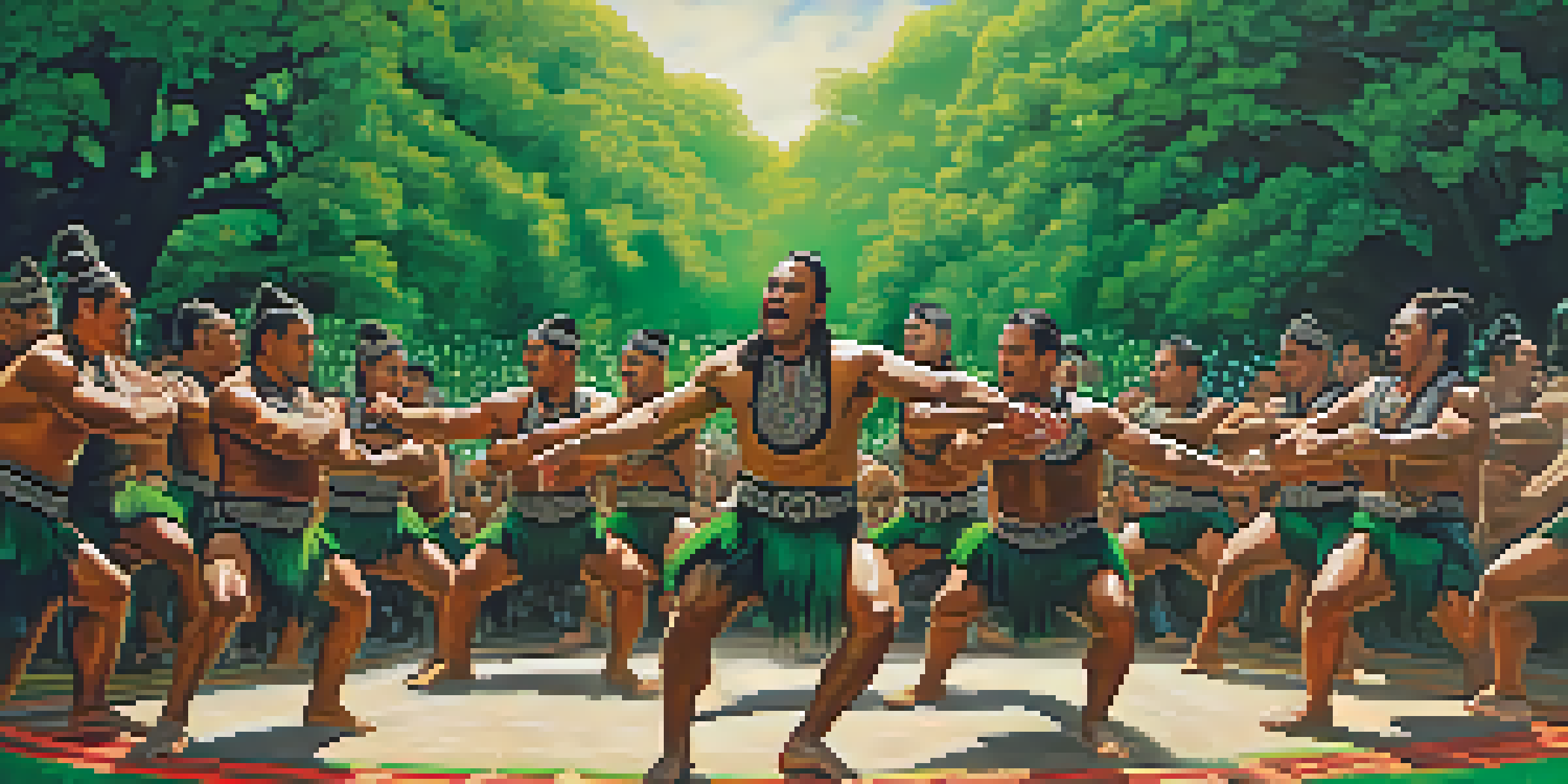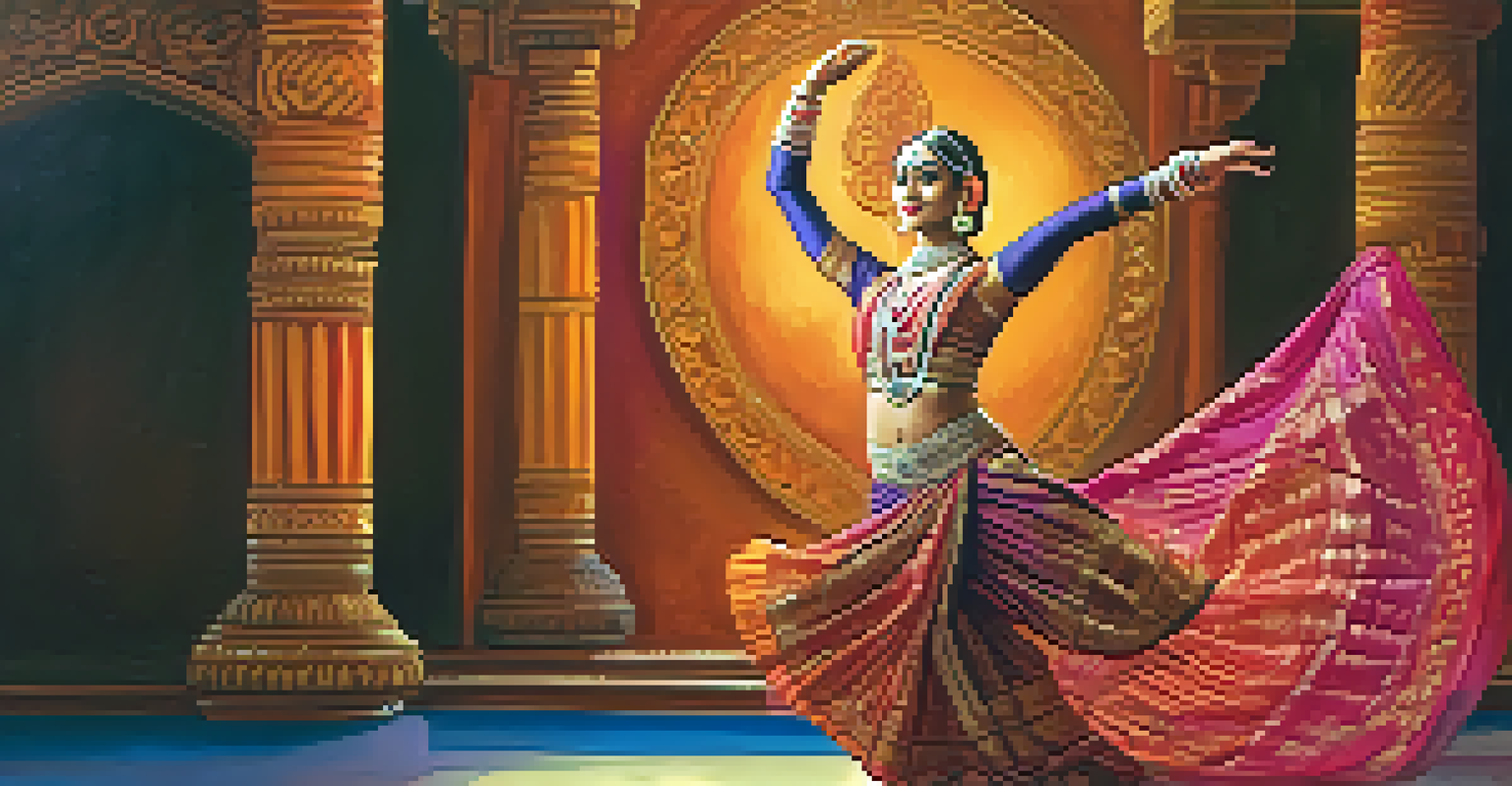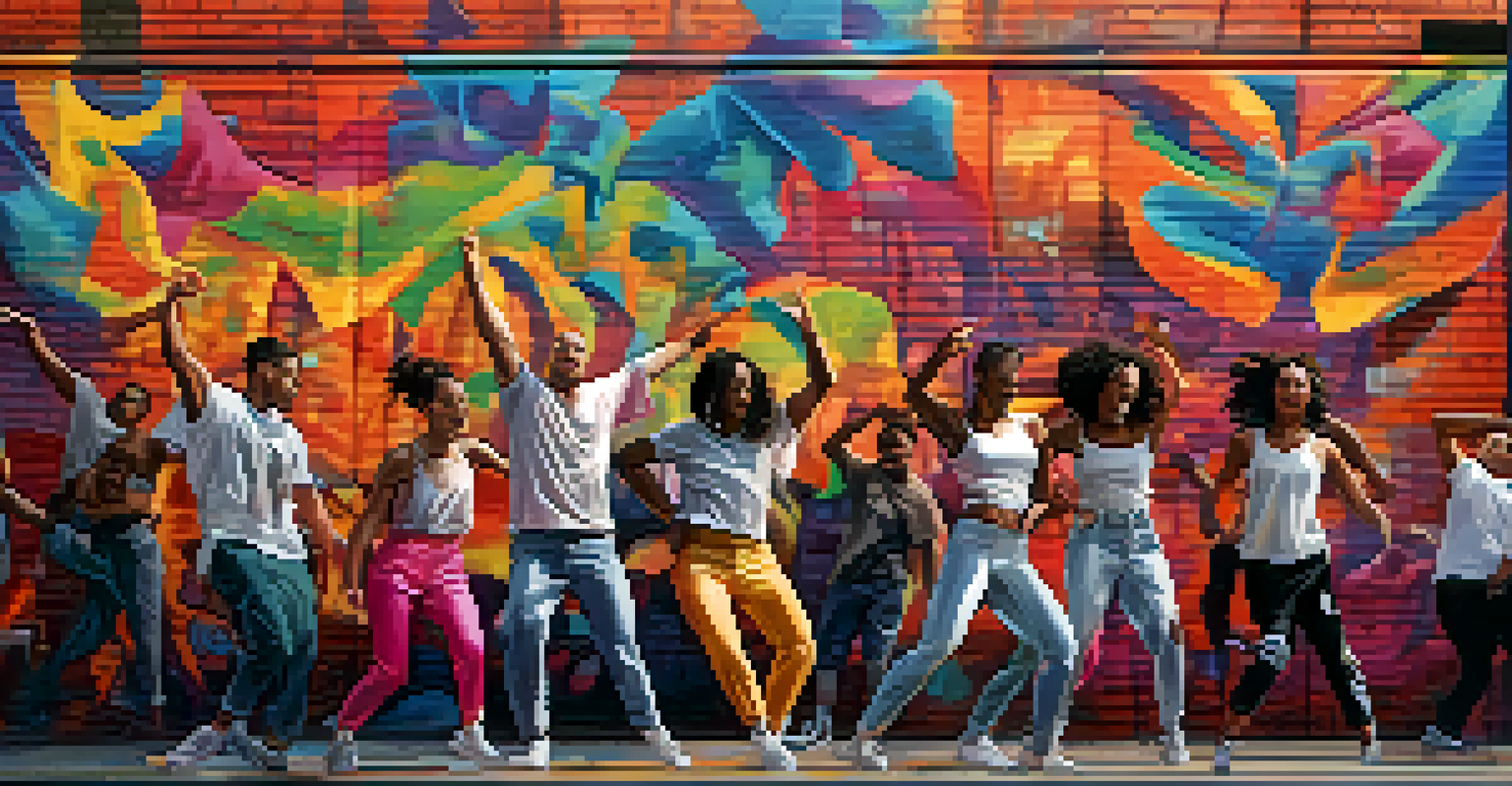Cultural Dances: Reflections of Gender Roles Across Cultures

Understanding Gender Roles in Cultural Contexts
Gender roles are the expectations and behaviors that society prescribes to individuals based on their gender. In many cultures, these roles have been historically significant and often dictate how men and women should behave, including their participation in dance. Cultural dances frequently serve as a mirror that reflects these societal norms, showcasing the intricate relationship between gender and performance.
Dance is the hidden language of the soul.
For instance, in traditional ballet, women often take on roles that emphasize grace and beauty, while men are typically portrayed as powerful and strong. This dynamic not only illuminates gender expectations but also reinforces them within the artistic realm. Consequently, understanding these roles helps us appreciate the deeper meanings behind various cultural dances.
By exploring these gender roles through dance, we can gain insight into the broader social structures that govern behavior and identity in different cultures. This exploration reveals how artistic expression can both reflect and challenge societal norms, leading us to question our own perceptions of gender.
The Role of Dance in Shaping Gender Identity
Dance often serves as a powerful form of self-expression, allowing individuals to explore and assert their gender identity. In many cultures, dance provides a space for both men and women to perform their respective roles while simultaneously challenging traditional norms. For example, in some Indigenous cultures, men may participate in dances that celebrate femininity, thus blurring the lines of gender identity.

This fluidity in dance not only enriches the performance but also fosters a sense of acceptance and understanding among community members. As dancers embody these roles, they create a dialogue around gender that encourages others to reflect on their own identities. This can be particularly significant in cultures where rigid gender roles are prevalent.
Dance Reflects Gender Norms
Cultural dances mirror societal expectations by showcasing traditional gender roles, influencing how men and women are perceived and behave.
Moreover, as societies evolve, so too does the dance associated with them. Contemporary dance forms increasingly embrace diversity, allowing for a broader representation of gender identities that were previously marginalized. This shift reflects a growing awareness of the complexities surrounding gender and identity in our global society.
Traditional Dances and Masculine Norms
In many cultures, traditional dances often highlight masculine norms, emphasizing strength and dominance. For example, the haka, a traditional Maori dance from New Zealand, serves as a powerful expression of masculinity and warrior culture. Through vigorous movements and chanting, this dance not only showcases physical prowess but also reinforces the role of men as protectors and leaders.
The body says what words cannot.
Such representations can have a lasting impact on societal expectations of men, influencing how they perceive their roles within families and communities. The celebration of masculinity in these dances may inspire pride but can also perpetuate stereotypes that limit emotional expression and vulnerability. As a result, traditional dances become a double-edged sword in shaping masculine identity.
However, there is a growing movement within these cultures to redefine masculinity. Some male dancers are beginning to incorporate softer movements and emotional expressions into their performances, challenging the conventional understanding of what it means to be a man. This evolution in dance reflects a broader cultural shift towards inclusivity and emotional awareness.
Traditional Dances and Feminine Norms
Conversely, traditional dances often portray feminine norms that emphasize grace, beauty, and nurturing qualities. Dances such as the Indian classical dance Bharatanatyam highlight the feminine ideal, showcasing intricate movements and expressions that celebrate womanhood. These performances often tell stories of love, devotion, and fertility, reinforcing traditional views of women in society.
While such dances can empower women by celebrating their strengths, they can also confine them within narrow definitions of femininity. The expectation to embody grace and poise may pressure women to conform to societal standards that limit their freedom of expression. This duality reveals the complexity of how traditional dances can uphold and challenge gender norms simultaneously.
Dance as Identity Exploration
Through dance, individuals can explore and assert their gender identities, challenging traditional norms and fostering acceptance within communities.
As cultures evolve, so too do the representations of women in dance. Contemporary choreographers are increasingly experimenting with themes that showcase women's power and resilience outside of traditional frameworks. This shift not only empowers female dancers but also inspires audiences to reconsider their perceptions of femininity.
Cross-Cultural Influences on Gender Roles in Dance
Cultural dances often reflect the interplay between various societal influences, leading to a rich tapestry of gender expressions. For instance, the fusion of African and Caribbean dance styles showcases how different cultural elements can reshape gender expectations. These dances often celebrate both masculine and feminine qualities, breaking down barriers and allowing for a more inclusive representation.
As globalization continues to connect cultures, traditional dance forms are being reinterpreted and blended, creating new opportunities for dialogue around gender roles. This cross-pollination encourages dancers to explore their identities in innovative ways, challenging the norms that once dictated performance. It also invites audiences to engage with diverse perspectives on gender.
These influences can be seen in the rise of street dance, which often embraces a mix of styles and gender expressions. Dancers are free to experiment, pushing against the boundaries of traditional gender roles. This evolution not only enriches the dance community but also fosters a more inclusive environment for all performers.
The Impact of Dance on Gender Norms in Society
Dance has the power to influence societal perceptions of gender roles significantly. Through performances, dancers can challenge stereotypes, promote awareness, and inspire change. For instance, performances that feature men and women breaking from traditional roles can spark conversations about gender equality and encourage viewers to reconsider their beliefs.
Additionally, dance can serve as a tool for activism, allowing communities to express their struggles and aspirations. In many cases, choreographers use dance to address issues such as gender-based violence or discrimination, mobilizing audiences to take action. This not only elevates the art form but also creates a platform for meaningful dialogue.
Evolving Gender Roles in Dance
The future of dance is becoming more inclusive, breaking down barriers and allowing for diverse expressions of gender identity.
As the impact of dance continues to grow, we see a shift in how gender roles are perceived within society. The increased visibility of diverse representations challenges outdated norms and encourages a more nuanced understanding of gender. This transformation is vital for fostering an inclusive environment where everyone can express their identity freely.
Future Directions: Evolving Gender Roles in Dance
As society continues to evolve, so do the gender roles expressed through dance. The future of dance promises to be more inclusive, with a focus on breaking down traditional barriers that have historically defined gender roles. Dancers are increasingly embracing fluidity, allowing for a richer exploration of identity that transcends binary classifications.
Innovative choreographers are leading the way by incorporating diverse voices and perspectives into their work. This shift not only enriches the art form but also reflects the changing attitudes toward gender and identity in society. As these new narratives emerge, they challenge audiences to engage with dance on a deeper level, prompting discussions around representation and equality.

Ultimately, the evolution of gender roles in dance mirrors the broader societal changes we are witnessing today. As we move forward, it is essential to support and celebrate these transformations, ensuring that dance remains a vibrant space for all expressions of identity. This journey invites everyone to participate, fostering a community where diversity is not only accepted but celebrated.